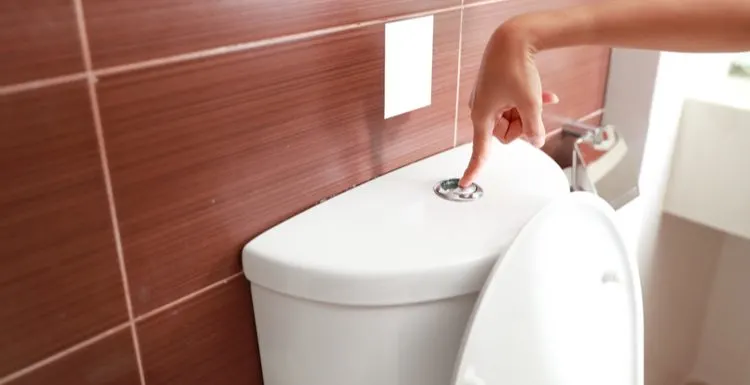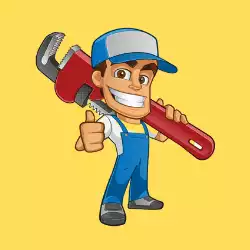A slow flushing toilet is a frustrating problem for any homeowner. It reduces the effectiveness of your toilet and can indicate a bigger problem with your plumbing.
Fortunately, much of the time, slow flushing toilets can be quickly fixed with simple solutions and easy-to-find parts. In a few cases, however, you may need to call a professional to correct the problem.
We partnered with Networx to help you find local plumbers in your area. Click to below to get a FREE quote.
Slow Flushing Toilet Causes
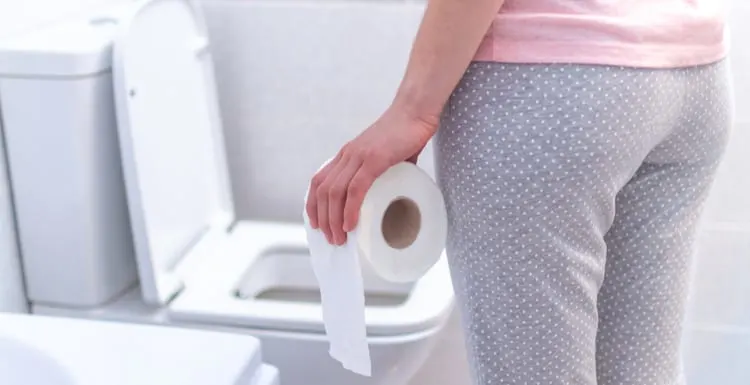
Goffkein.pro/Shutterstock
We’ve compiled the most common causes of a slow flushing toilet. Let’s look at how you can identify which problem is the culprit and how you can restore your toilet’s fast, efficient flush.
In this guide, we cover the most common causes of a slow flushing toilet and how you can fix them yourself. We also provide recommendations on when to call a plumber if the problem goes beyond a simple DIY fix.
A clogged drain, faulty flapper valve, blocked jet holes, and inadequate water level in the tank are all reasons a toilet may flush slowly.
The solution can be as simple as using a vinegar or bleach solution or toilet plunger, or as challenging as replacing entire assemblies in your toilet’s plumbing.
Clogged Toilet Drain
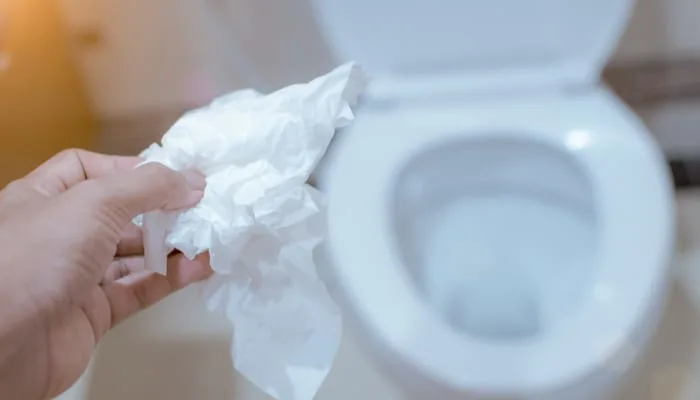
Sunshine Studio/Shutterstock
Your household drains are connected to every water-using appliance in your home and are designed to carry wastewater and waste away.
If there is a clog in any drain in your home, you may notice a slow flushing toilet, among other things. The clog may be in the toilet’s drain, drain trap, or another drain in the home.
The drain trap is a curved part of the drain pipe. Its job is to hold standing water and prevent sewer gases from entering your home through the drains.
But its curved shape and narrow diameter make it especially prone to clogs. Large amounts of toilet paper, hard objects, hair, or non-flushable sanitary products.
Or, if it’s the result of toilet fresheners being flushed, you will likely deal with a clog severe enough to slow the flushing action of your toilet.
To find out if your drain is clogged or developing a clog, try pouring a gallon of water directly into the toilet bowl. It should force a fast flush if there is no clog.
If the water level inside the bowl rises quickly instead and slowly drains out, you’ll know you have a clog (full or partial) in the drain or drain trap.
How to Fix a Clogged Drain
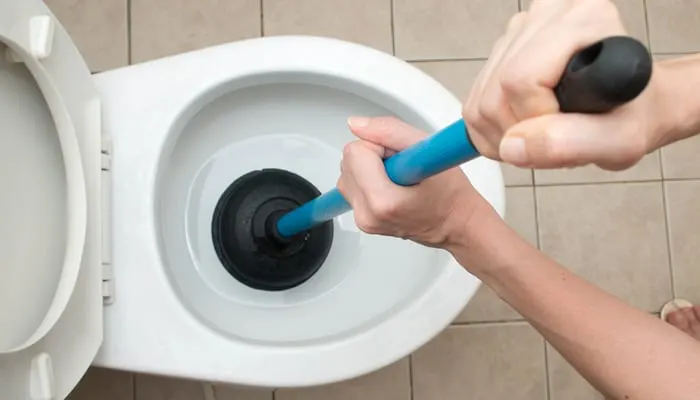
Jones M/Shutterstock
If you determine that your drain may be clogged with the force flush test, you can try to dislodge the clog with a standard toilet plunger. There’s a proper technique to get the best results from plunging.
Place the plunger’s opening over the center of the toilet bowl at the drain opening. Then, press firmly downward to create a seal. Keep the plunger vertical, not at an angle.
Alternately pull up and push down on the plunger handle while keeping the plunger firmly sealed over the drain opening. This will create enough suction to force water back and forth in the drain opening and clear the clog.
If you’re unable to dislodge it this way after about 30 seconds, you may need to call a professional plumber to come and snake the line to dislodge the clog.
Flapper Valve
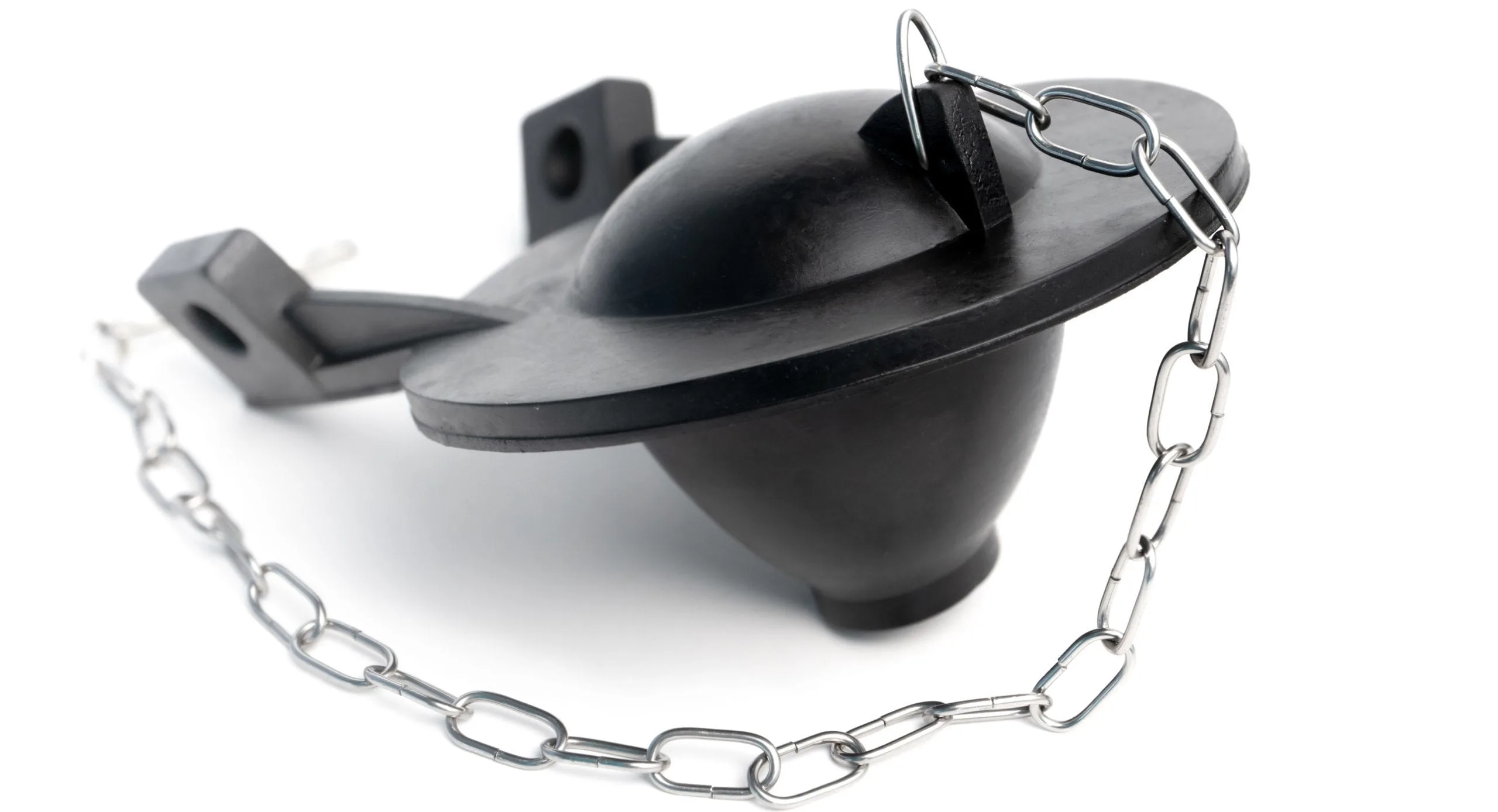
Sophiecat/Shutterstock
Worn out flapper valves are another common reason for a slow flushing toilet. The flapper valve controls the flow of water from your toilet tank into the toilet bowl.
When you flush the toilet, the lift arm connected to it pulls the flapper valve up and allows the tank’s water to rush into the toilet bowl. This influx of water creates the suction needed for a healthy flush.
But if there’s a problem with your flapper valve, it may not completely cover the opening at the bottom of your tank anymore. This allows water to slowly leak into the bowl, never building up enough strength for a full flush.
How to Fix a Flapper Valve
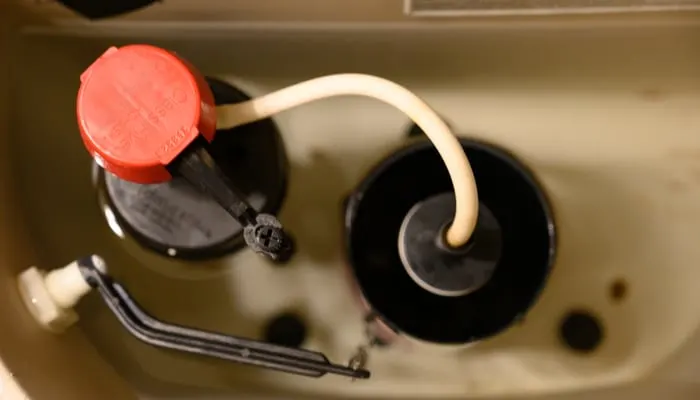
Lost_in_the_midwest/Shutterstock
To fix a worn flapper valve yourself, you’ll need a new flapper valve like your current one. Once you’ve got the right valve, start by shutting off the water using the water valve behind the toilet.
Next, flush the toilet to remove most of the water from the tank. You can now disconnect the old flapper by unclipping the small chain connected to the lift arm.
The old flapper will be attached to the overflow tube with two pegs. If your valve is made of hard plastic, you should be able to snap the small hooks off the pegs. If it’s made of rubber, they should slide off.
Grab your new flapper and hook the small hooks on the pegs (if your overflow tube does not have the pegs, you can use the plastic or rubber ring that came in the package with your new flapper valve).
Attach the chain to the lift arm. And keep in mind that you may need to shorten the chain for a perfect fit. The chain should hang a bit with some slack, but not so much that it can get caught under the flapper valve.
Turn the water back on and flush a few times to see if it fixed the problem. If it didn’t, your entire flush valve seat might need to be replaced to create a tight seal and stop the slow flushing.
Call a professional for this complex job to ensure it’s done properly. We even make it easy to do this on our embedded Networx or popup form on this page.
Blocked Jet Holes
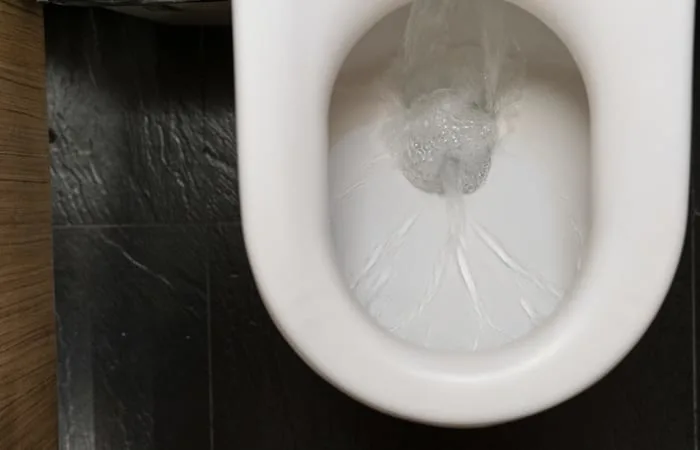
Bangkoker/Shutterstock
Under the rim of your toilet bowl are a series of small jet holes that allow the water from the toilet tank to enter the toilet bowl. When was the last time you thoroughly cleaned under the rim?
Mineral buildup (usually lime and calcium) or bacterial growth over time can close these holes or reduce their openings enough to result in a slow flush.
Blocked jet holes are an easy problem to fix if they turn out to be the culprit behind your slow flushing toilet. Try these easy steps for cleaning excess mineral buildup in a toilet.
How to Fix Blocked Jet Holes
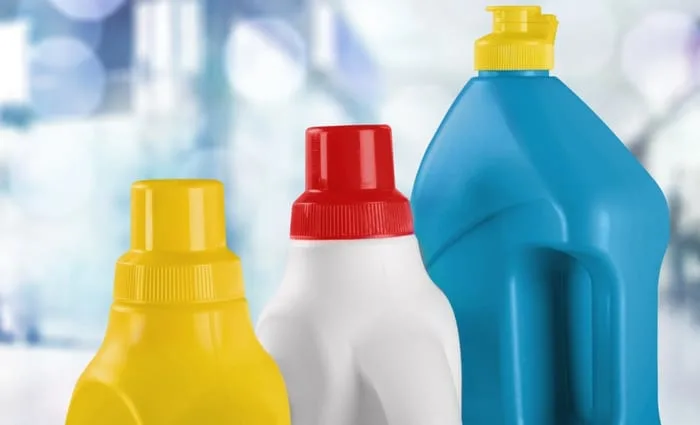
Billion Photos/Shutterstock
For mineral buildup: Warm a cup of white vinegar in the microwave for about 1 minute. Remove your toilet tank lid and pour the warm vinegar into the overflow tube. Let the vinegar sit in the tube for about 30 minutes, then flush the toilet.
Grab a small hand mirror to help you see the jets under the rim and use a small Allen wrench to clean out each jet hole. Flush as you work to remove the mineral scale you’ve dislodged.
For bacterial growth: A bleach solution will work on blocked jet holes resulting from bacterial growth. Make a bleach solution of one part bleach to 10 parts water.
Remove the tank lid and pour the solution into the overflow tube. Let it sit for about 10 minutes, then flush. Grab a small hand mirror and stiff wire to clean out each one of the jet holes.
Once you’ve cleaned all the holes, use a toilet bowl cleaner to target the rim area and ensure all the bacteria growth is gone. Pour another 1:10 bleach solution into the overflow tube and flush again to complete the job.
Inadequate Water Level in the Tank
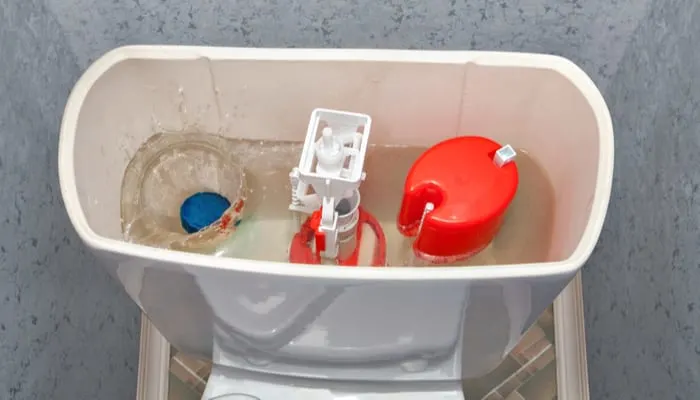
Grigvovan/Shutterstock
Your toilet tank needs to have plenty of water in it (about ½” below the overflow tube) to create enough force for a normal flush. If your tank has an inadequate water level, you’ll experience weak or incomplete flushes.
Low water levels in the tank can be due to many problems. A plumber will be able to diagnose why your tank is not filling with enough water and replace the correct part. There are a few simple fixes you can try, however.
How to Fix Inadequate Water Level in the Tank
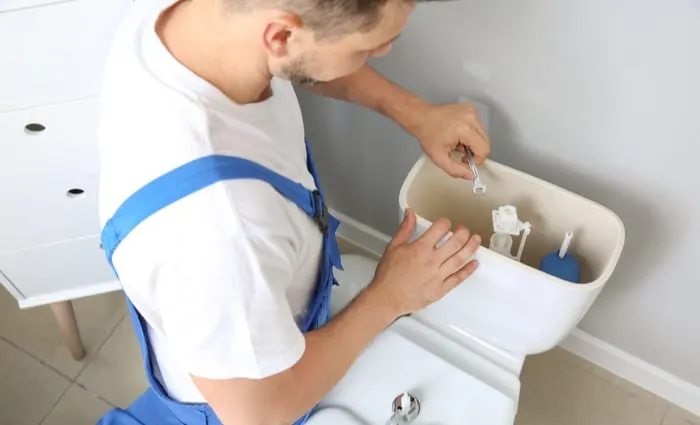
Pixel-Shot/Shutterstock
If the water level is low, locate the fill valve in the tank. It is connected to the overflow tube with a small fill tube. It will also have a small screw at the top called the water level adjustment screw.
Turn this screw clockwise to raise the water level up to about ½” below the overflow tube. If you find that the water level is adequate, but your flushes are very weak, the flapper valve chain may be too short.
If this is the case, it will close before the tank can feed enough water into the bowl for a normal flush. You’ll need a new flapper chain, but a quick fix is hooking a paperclip or two together to lengthen the chain temporarily.
When to Call a Plumber
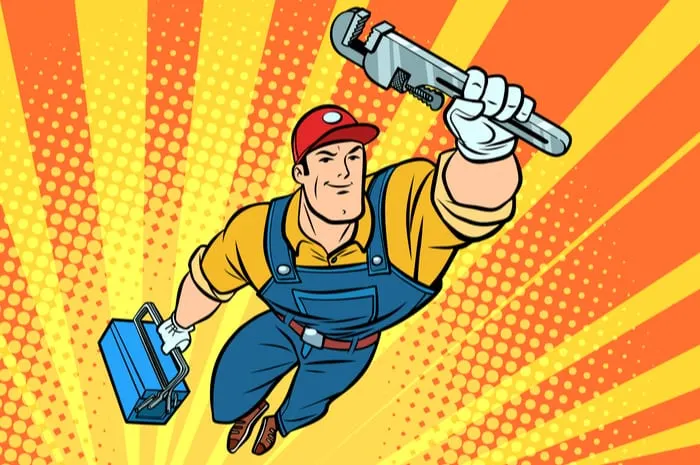
While there are a few slow flushing causes that you can fix yourself, calling a plumber is the best decision in some cases.
How do you know when it’s time to call a professional about a slow flushing toilet?
Clogged Drains
A stubbornly clogged drain that doesn’t disperse after plunging will require a plumber to come and snake the drain line to bust up the clog.
In cases where foreign objects like toys, razors, or even hair make their way into the drain, snaking will almost always be required.
Old Flappers
A worn-out flapper valve that isn’t sealing properly can be replaced without a plumber easily enough.
But if a new flapper doesn’t fix the problem, it may be the flush valve seat (which creates a tight seal where the flapper closes).
Broken Toilet Valves
A flush valve seat replacement is a complex job and should be installed by a professional.
It’s easy enough, but missing one small piece can cause an expensive water leak. I personally recommend calling a pro for this.
When to Call a Pro
Blocked jet holes don’t typically require a plumber to remedy – you need to use the proper cleaning solution to work on the cause of the blockage (vinegar for mineral buildup, bleach for bacterial growth).
An inadequate water level in your toilet tank can be adjusted with the water level adjustment screw located on top of the fill valve. The problem may be something deeper and might require a plumber to address the issue.
We partnered with Networx to help you find local plumbers in your area. Click to below to get a FREE quote.
Still Have a Slow Flushing Toilet?
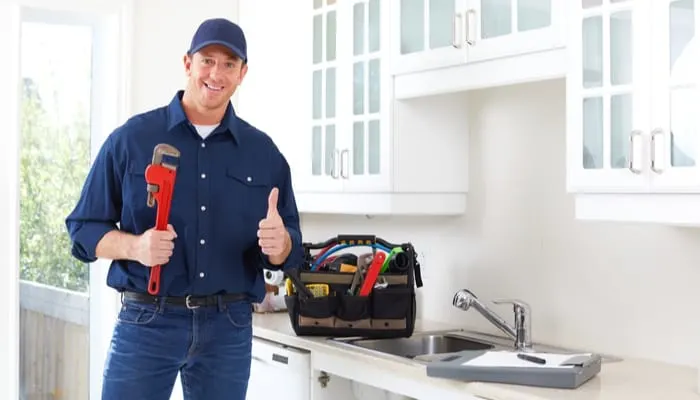
Kurhan/Shutterstock
Still have a slow flushing toilet?
Don’t panic. There’s nothing wrong with attempting a quick fix when you notice a slow flushing toilet in your home, but don’t make the mistake of taking on a job that is better suited for a professional.
You could end up wasting money by replacing unnecessary parts, spending a lot of time troubleshooting, and even damaging your plumbing. Calling a professional ensures the job will be done correctly and quickly.
Resources:

